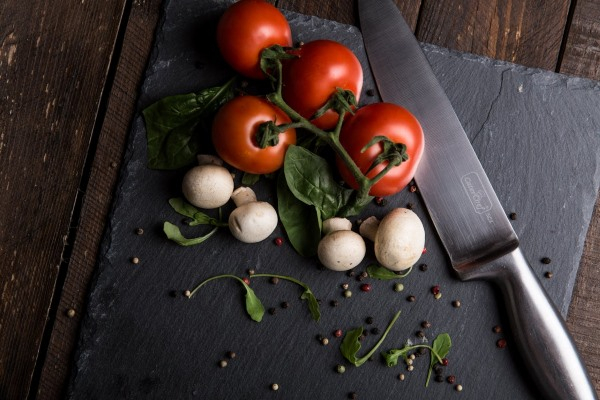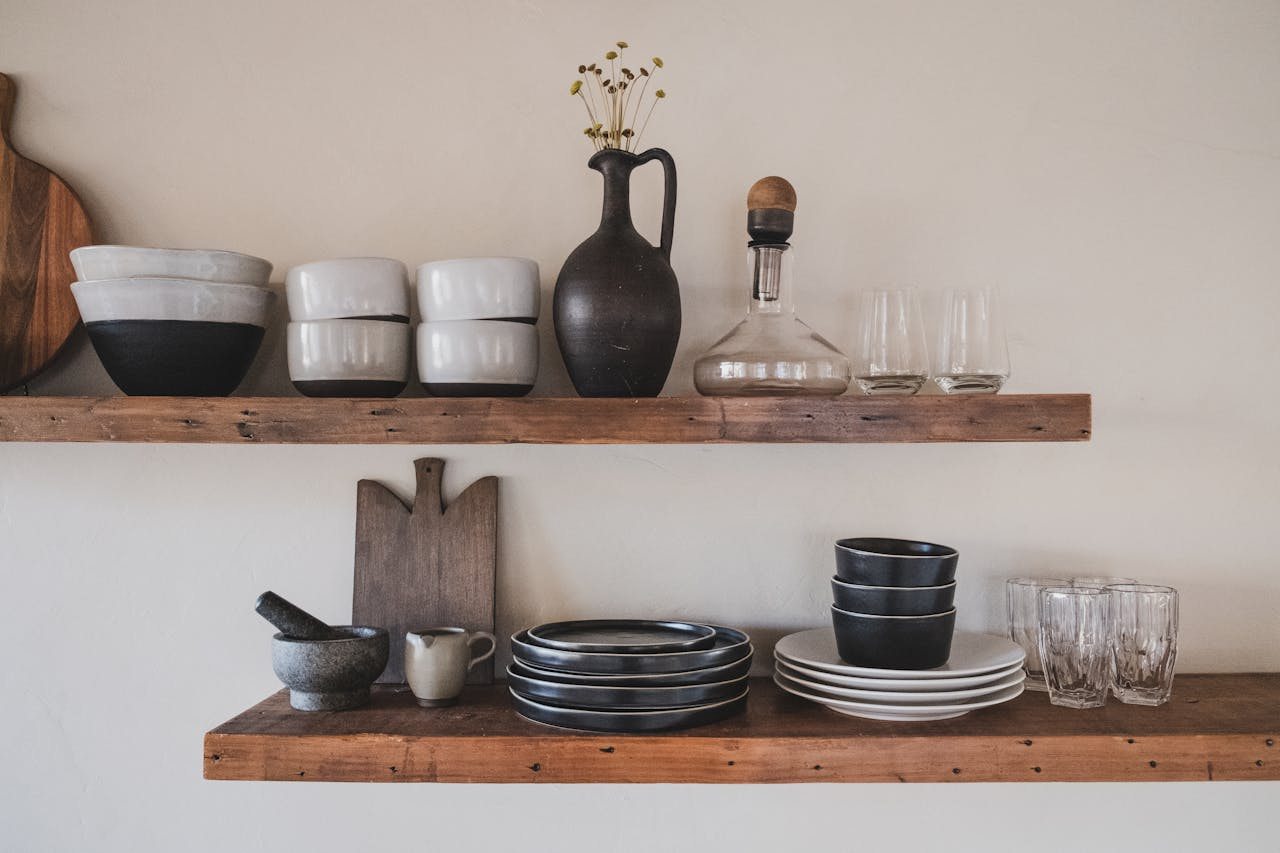Kitchens are the heart of most homes—a place where meals are prepared, snacks are grabbed, and conversations happen over cups of coffee. But despite all the love that flows through the kitchen, it’s also a hotspot for grime and germs. The reality is that even though we clean regularly, some areas still get overlooked or don't get the attention they need. Let’s explore the dirtiest places in your kitchen and give you tips on how to keep them sparkling clean.
1. The Kitchen Sink
It might seem ironic, but the very place you wash dishes can be one of the dirtiest spots in the kitchen. Food particles, bacteria, and even mold can accumulate, especially if you don’t clean your sink regularly. The moist environment provides the perfect breeding ground for bacteria like E. coli and Salmonella.
How to clean it:
At least once a day, scrub the sink with a disinfecting cleaner or a homemade mix of baking soda and vinegar. Don’t forget the faucet and handles—they also harbor germs. Wipe everything down with a disinfecting wipe after you finish.
2. Sponges and Dishcloths
We use these daily to wipe counters, clean dishes, and scrub away food debris, but sponges and dishcloths are some of the worst offenders when it comes to harboring bacteria. Studies show they can carry more germs than a toilet seat!
How to clean it:
To avoid spreading bacteria, microwave your sponge for a minute every few days (make sure it’s damp to avoid fires) or toss it in the dishwasher on a hot cycle. Replace sponges regularly—at least every two weeks. As for dishcloths, throw them in the laundry after each use and never let them sit damp in the kitchen.

3. Refrigerator Drawers
We toss fruits, veggies, and sometimes raw meat in the refrigerator drawers, but how often do we clean them? These drawers can become home to bacteria from raw produce and meat juices that may leak. Mold and bacteria can thrive in the cold, damp environment.
How to clean it:
Take everything out and wash the drawers with warm, soapy water at least once a month. A quick wipe with a solution of vinegar and water in between deep cleans will help prevent bacteria from building up.
4. Cutting Boards
Cutting boards—especially wooden ones—are notorious for holding onto bacteria, particularly if you cut raw meat. Tiny grooves from knife cuts can trap food particles, leading to bacterial growth.
How to clean it:
After each use, scrub your cutting board with hot, soapy water. For an extra level of cleanliness, sanitize it with a diluted bleach solution or run plastic cutting boards through the dishwasher. For wooden cutting boards, rub them down with lemon and salt occasionally, and always let them dry completely to prevent mold.

5. Stove Knobs
When was the last time you cleaned your stove knobs? These small, frequently touched items are magnets for grease, food particles, and bacteria. Every time you cook, your hands—no matter how clean—transfer some germs to the knobs.
How to clean it:
Most stove knobs are removable, so take them off and soak them in hot, soapy water at least once a week. Wipe down the area around the knobs, too. If the knobs are not removable, use a small brush or toothbrush to scrub around them.
6. The Blender Gasket
That rubber ring on the bottom of your blender? It’s called a gasket, and it’s a prime spot for bacteria to hide. Food particles can easily get trapped there, especially if you blend smoothies or soups, and washing just the blender jar might not be enough.
How to clean it:
Every time you use your blender, disassemble all the parts, including the gasket, and wash them in hot, soapy water. Some blenders are dishwasher-safe, so take advantage of that for an extra deep clean.
7. Handles: Refrigerator, Microwave, and Cabinets
Think about how many times you open your fridge or microwave throughout the day. Now think about what’s on your hands when you touch those handles—raw meat, unwashed produce, sticky dough, or even crumbs from a quick snack. The result? These handles are some of the dirtiest spots in the kitchen.
How to clean it:
Wipe down handles daily with a disinfecting cleaner or a vinegar-water solution. For cabinet handles, a microfiber cloth with a little dish soap works well to cut through the grease.
8. Coffee Maker
That beloved coffee machine can become a breeding ground for mold and bacteria, particularly in the water reservoir. The moist environment makes it a perfect spot for germs to thrive, especially if you don’t clean it often.
How to clean it:
At least once a month, run a mix of equal parts water and vinegar through the machine to clear out any mold or buildup. Follow this by running plain water through the machine to rinse out any vinegar residue. Don’t forget to wipe down the outside and any removable parts regularly.

9. The Garbage Disposal
The garbage disposal might make it easier to get rid of food scraps, but it’s also a place where food debris gets trapped and rots, leading to unpleasant odors and bacterial growth.
How to clean it:
To freshen up your garbage disposal, toss in some ice cubes and a handful of salt, then run it with cold water. This helps dislodge trapped food. To deodorize, grind lemon or orange peels. For a deeper clean, sprinkle baking soda down the disposal, followed by vinegar, and let it bubble for a few minutes before rinsing.
10. The Toaster and Toaster Oven
Crumbs and burnt food can build up quickly in toasters and toaster ovens, becoming a magnet for bacteria and pests. Plus, grease and food splatters inside toaster ovens can create a fire hazard.
How to clean it:
Unplug your toaster and shake out the crumbs regularly. For toaster ovens, clean the crumb tray and wipe down the interior weekly with soapy water or a mixture of vinegar and water. Make sure to avoid getting any water on electrical parts.

11. Under the Sink
It’s easy to forget about the cabinet under your kitchen sink, but this area often houses cleaning supplies, garbage bags, and damp items that can attract pests or mold. Leaks from pipes can also lead to mold and mildew growth.
How to clean it:
Empty the space once a month and wipe down the area with a disinfecting cleaner. Check for any leaks and make sure the space is dry before putting items back. Consider using shelf liners to make future cleanups easier.
12. Your Can Opener
Whether you’re opening a can of soup or dog food, can openers are used frequently, yet they rarely get a thorough cleaning. Food residue can stick to the blades and gears, which can then lead to cross-contamination.
How to clean it:
After every use, wash your can opener in hot, soapy water. For manual can openers, pay close attention to the blade area, as food particles tend to get stuck there. An old toothbrush can help scrub away any debris.
13. Dishwasher Seals and Edges
It may seem like dishwashers would be self-cleaning, but food particles, grease, and soap scum can build up around the seals and edges over time, becoming a breeding ground for bacteria and mold.
How to clean it:
Wipe down the rubber seals and edges of your dishwasher with a disinfecting cloth or warm soapy water once a week. Every month or so, run an empty cycle with vinegar or a dishwasher cleaner to break down any buildup inside.
Final Thoughts
Your kitchen might be where you create delicious meals and snacks, but it can also be a hidden minefield of bacteria and grime. The key to keeping these areas clean is regular maintenance. By paying attention to often-overlooked spots like handles, cutting boards, and sponges, you can keep your kitchen not only looking fresh but also safe and healthy for your family.
A little extra cleaning in the right places goes a long way toward creating a sparkling, germ-free kitchen!


